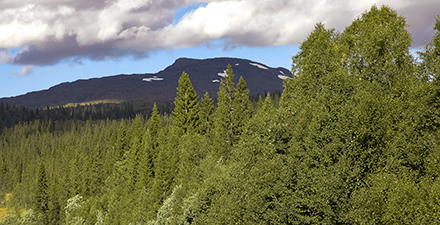During 2022, the Norwegian Forestry Agency paid out approximately SEK 250 million (approx A$34M) in compensation in 110 cases where landowners were denied felling in forests near mountains. Source: Timberbiz
The number of new applications for felling fell during the year, but the pressure is still high, and it can currently take a long-time before an application is decided and ready.
In 2021, the number of new applications to fell in the mountains broke records.
At the same time, the Norwegian Forestry Agency made a decision to reject the equivalent of SEK 300 million covering 12,600 hectares.
During the same year, SEK 75 million was paid out to landowners who were refused felling.
The Norwegian Forestry Agency’s compilation for 2022 shows that close to SEK 250 million was paid out during the year covering 7,100 hectares of forest where high natural values have now been preserved.
“We continue to invest a lot of resources in ensuring that the landowners receive a legally secure handling and as quickly as possible receive notification and the financial compensation they are entitled to,” said Staffan Norin, regional manager, Norwegian Forestry Agency Region North.
All in all, with the continued high number of cases handled by the Norwegian Forestry Agency, it can take 1.5 years to get a decision on the application, depending on when in the year it is received.
In addition, it may take another year or so to receive information about the size of the compensation.
“The right to compensation is regulated by law and is not affected by budget changes.
Everyone who becomes eligible for compensation will receive it.
“But every matter takes time and even though we have many employees who handle this now, the payment can unfortunately be delayed,” said Kristina Nilson, coordinator of the Norwegian Forestry Agency.
Each case is tried according to the regulations that exist, which means an investigation of natural values, the age of the forest, the possibility of growing new forest and what needs there are to take the environment into account.
It is often required that the Norwegian Forestry Agency make field visits when there is no snow, in the forests where the assessments are more difficult to make.
In cases where the landowner is entitled to compensation, the timber volume in the forest must be measured to determine the size of the compensation, also in the field.
The stock is then valued and a decision is made on the size of the compensation.
The number of applications differs between the counties in a mountain environment, largely depending on the ownership structure, but also on how the geography looks.
Most cases are handled in Jämtland County, which handled 169 during the year out of a total of 290 decided cases.
In the area closest to the mountains, you may not cut down without permission from the Swedish Forestry Agency, unlike the rest of the country, where in the vast majority of cases you need to make a report.
The Norwegian Forestry Agency then examines the application and issues a decision.
The Norwegian Forestry Agency can refuse permission for felling for measures that may significantly affect natural and cultural environmental values.
If the landowner’s application for a permit is rejected, the landowner may be entitled to compensation.
According to the judgments from the Land and Environmental Supreme Court that won legal force in June 2020, it has been determined that the right to compensation applies to the forest owner who is not allowed to cut down and full trespass compensation must be paid, that is 125% of the reduction in market value.
Mountain forest includes the forest along the mountain chain from Norrbotten to the northern parts of Dalarna.The area includes approximately 1.2 million hectares of productive forest land.








